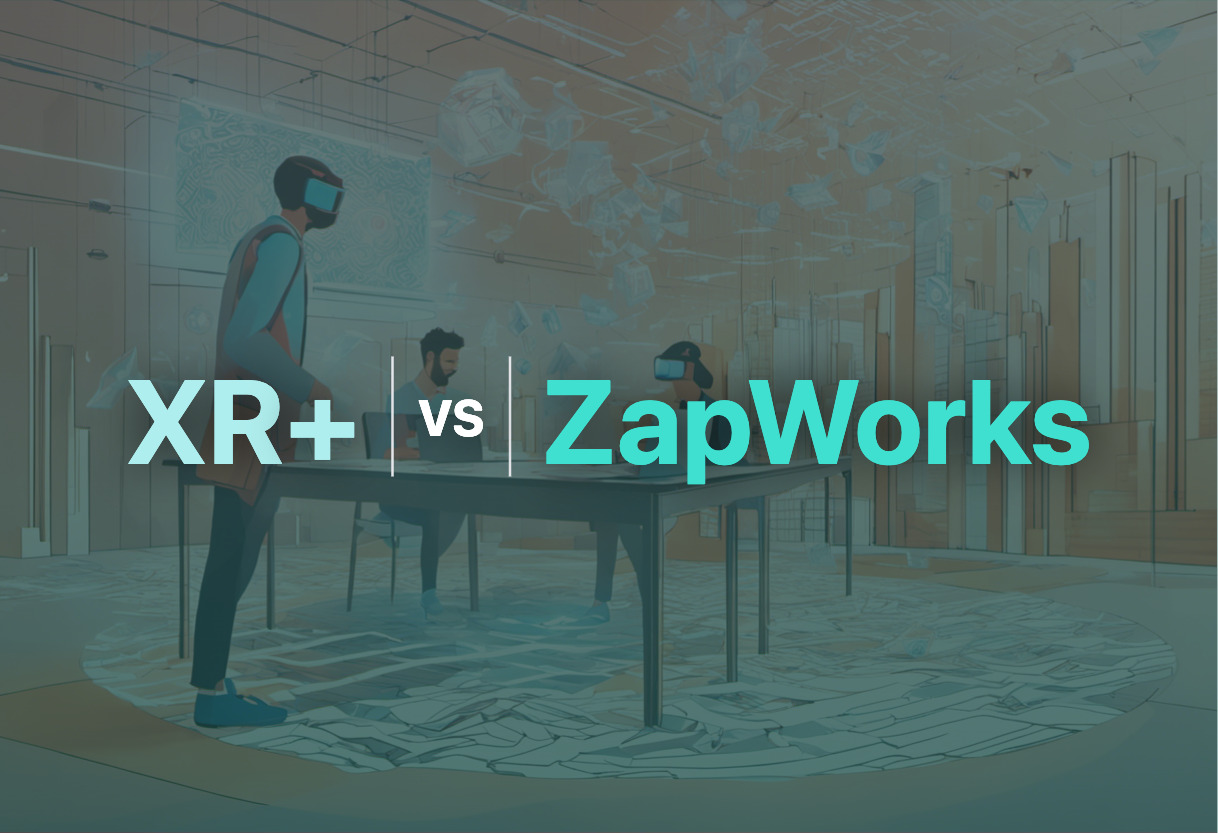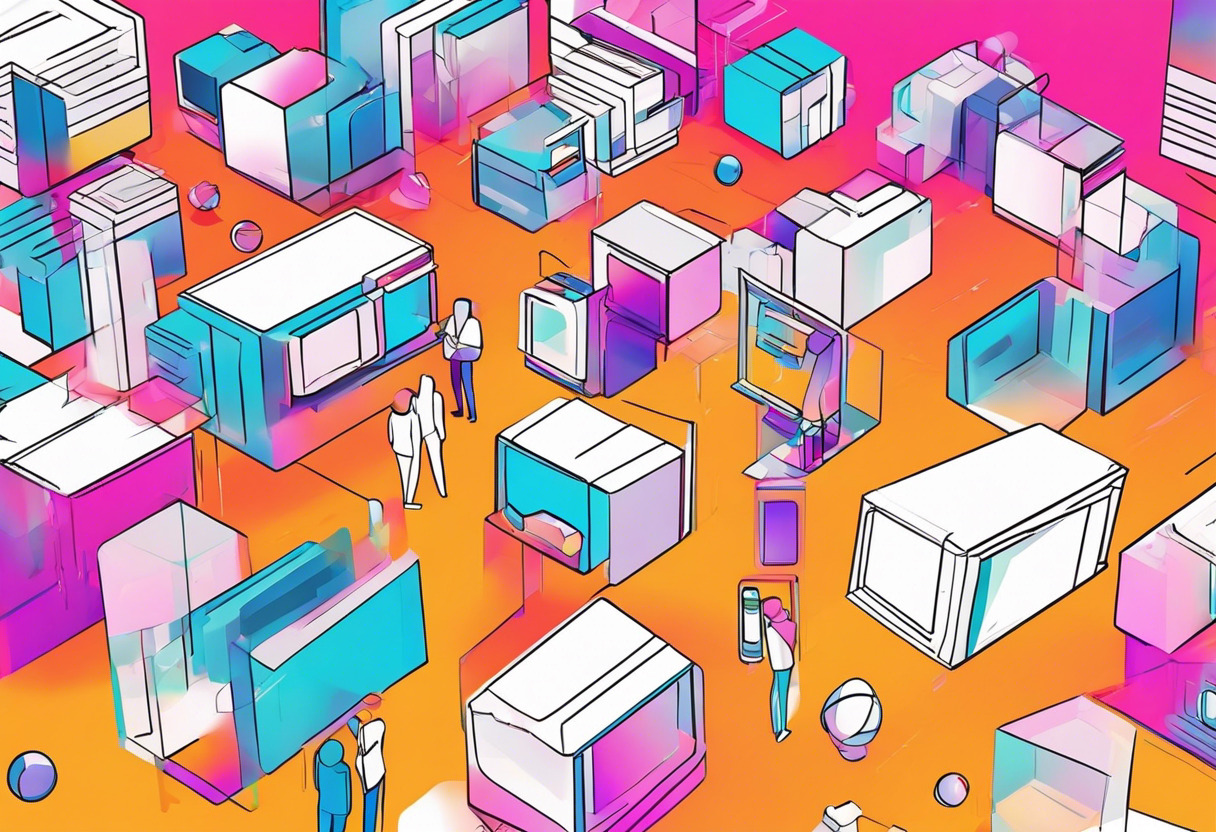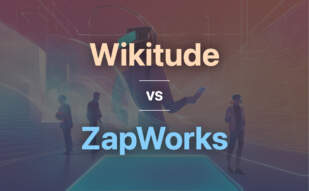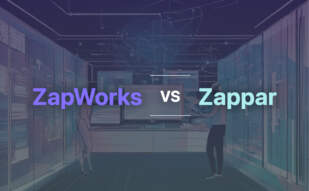When comparing XR+ and ZapWorks, XR+ emerges superior for its extensive feature set, inclusivity, AI implementation, and versatile application. However, ZapWorks might please users aiming for user-friendly, efficient WebAR development without coding.

Key differences between XR+ and ZapWorks
- ZapWorks offers no-code, low-code, and custom coding, while XR+ emphasizes on no-code, user-friendly creations.
- ZapWorks has been criticized for its UX and limited creative liberty, whereas XR+ leans on creating an engaging user experience.
- XR+ offers inclusivity features for disabled users, unlike ZapWorks.
- ZapWorks targets WebAR applications, while XR+ covers a wider range of AR/VR/Metaverse experiences.
- XR+ deploys AI for automatic video creation and key dataset analysis, a functionality absent in ZapWorks.
- ZapWorks generally caters to personal, business, and educational applications; XR+ spans tourism, art, commerce, services, and more sectors.
- XR+ provides OS agnostic deployment options, while ZapWorks does not distinctly mention this.
| Comparison | XR+ | ZapWorks |
|---|---|---|
| Sector of Application | Tourism, heritage, culture, events, festivals, etc. | Education, Personal, Business |
| Promotion Channels | QR codes, webAR players, social media | Brand-specific strategies |
| AR/VR Content Creation Tools | Images, videos, text, 3D models | Zapworks Studio tool |
| Deployment Options | No specific deployment options specified | OS agnostic including cellphones, tablets, PCs |
| Price Structure | Free, Advanced and Super XR web app with differing features | Varying prices for personal, business, and education |
| Critic Reviews | Trusted by popular brands | Criticisms relate to UX and limited features |
| Unique Features | MDACA XR+ for data integration | ZapWorks Studio 6 for AR content creation, Natal for lowering tech-barrier |
What Is XR+ and Who’s It For?
XR+ is a technology company excelling in AR/VR/metaverse applications in varied sectors such as tourism, heritage, art, culture, events, festivals, live shows, marketing, communication, entertainment, immersive games, commerce, services, and education. Aimed towards those seeking direct access to a vast user base, XR+ provides inclusivity features for users with disabilities and values eco-responsibility.
By using XR+, developers can expect quick results with ease, catering to custom development needs. The focus lies in offering immersive AR experiences trusted by popular brands and providing a range of web apps with distinct features and data integrations.

Pros of XR+
- No-code creative tools
- Inclusivity features for users with disabilities
- Ar/vr/metaverse cross-device access
- Engages users enhancing dwell time and interactions
- Data integration with the MDACA platform
Cons of XR+
- Potential difficulty in handling complex experiences
- Less suited for users not focusing on AR/VR experiences
What Is ZapWorks and Who’s It For?
ZapWorks is an AR ecosystem providing a creative suite, designer, studio, and AR SDKs. It allows designers, developers, and marketers to create WebAR experiences using no-code, low-code, and custom code options for personal, business, and education use.
It is globally used for creative AR content while impacting sales and marketing efforts. With it, users can conveniently import 3D models, characters, scenes from Sketchfab.

Pros of ZapWorks
- No-code, low-code, and custom code options
- Powerful AR content creation tools
- Easy object tracking
- Integrates with ARKit & ARCore
Cons of ZapWorks
- Claims of lack of creative freedom
- Limitations in tracking features for WebAR
The Final Say: XR+ vs ZapWorks
Time to make sense of the clash – XR+ and ZapWorks, both strong contenders in the AR/VR/Metaverse arena, yet each with distinct strengths.
AR/VR Developers
XR+, with its vast toolset for no-code creative development and superior inclusivity features, shines above Zapworks. Packed with AI for automatic video creation and dynamic QR codes for measurable experiences, XR+ offers an intricate blend of AI and VR for developing immersive narratives.

Marketers & Advertisers
ZapWorks, featuring a user-friendly interface and integrated ARKit & ARCore, is a marketer’s dream tool. Its direct integration with ARKit and ARCore, and no coding requirement align perfectly for scenario-based marketing strategies, empowering marketers to create catchier and more engaging AR content to drive leads.

Education Institutions
ZapWorks, thanks to its ease of use and efficiency in object tracking, is a popular choice in the realm of education. XR+, on the other hand, does make a compelling counterpart with its dynamic XR web app suite and diverse cross-device access, enhancing the interactivity of virtual classrooms.

In summation, XR+ is the frontrunner for AR/VR developers looking to embark on a no-code creative journey with inclusivity elements, while ZapWorks earns compatibility points with marketers, owing to its user-friendly interface and integrated ARKit & ARCore. In the realm of education, both platforms prove compelling with distinctive strengths.
Logan Bellbrook
Content writer @ Aircada with a knack for nature & AR/VR/XR. Blogging the intersection of tech & terrain.





